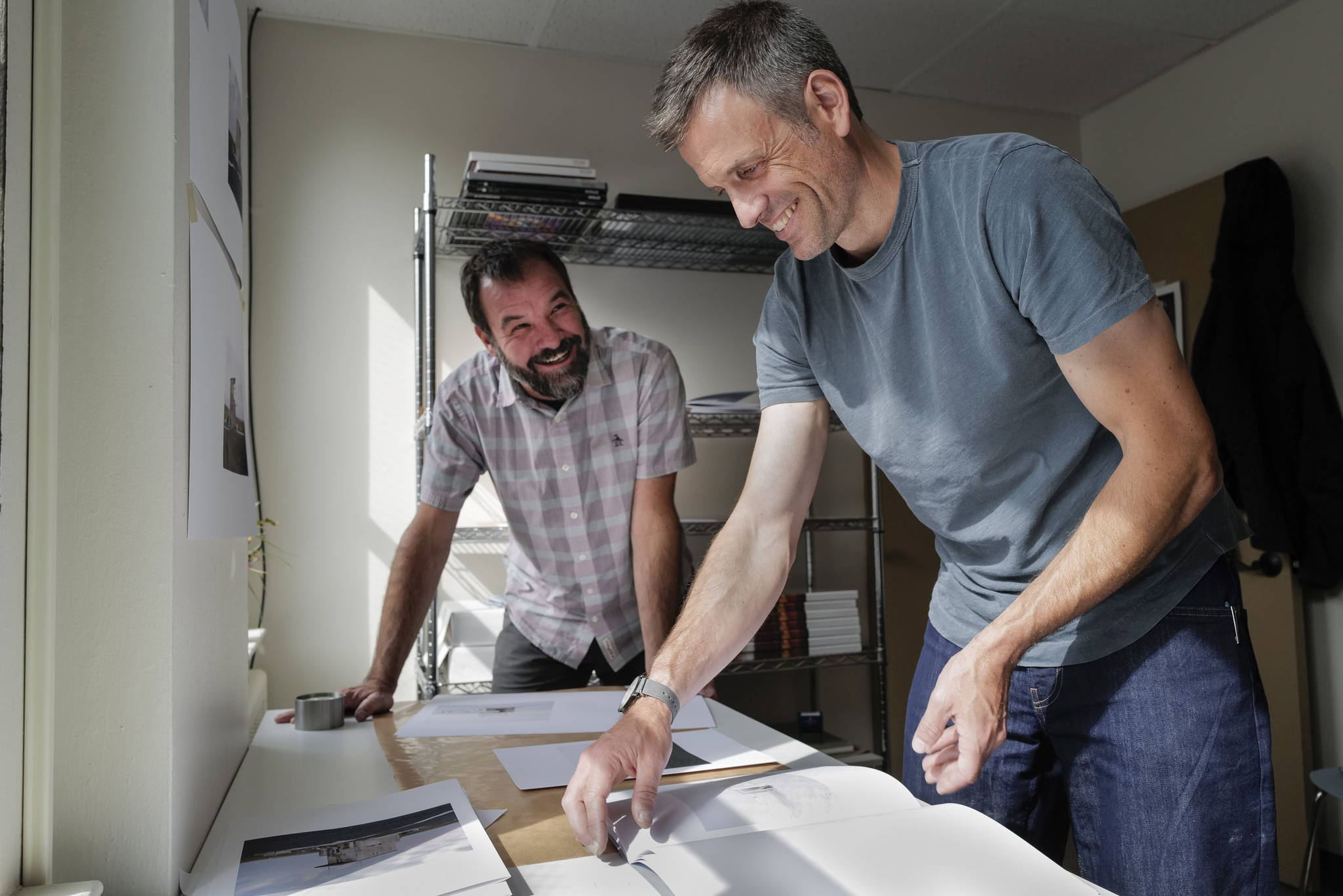Eirik Johnson’s newest photo book isn’t for everyone, and that’s partially the point of the project.
“Barrow Cabins” is a carefully considered collection of photos Johnson, a Seattle-based photographer, took of hunting cabins at Point Barrow near Utqiagvik, formerly Barrow. It is being released by Juneau-based independent publisher Ice Fog Press in the form of a small run of hand-crafted books.
“It’s sort of a niche thing,” Johnson said in an interview. “It’s almost like how vinyl has a passionate following still. There’s a passionate, niche audience for photo books. The pie in the sky is that you make something that the passionate photo book lovers love, but that crosses over to the people who don’t necessarily have a collection of photo books but love it for what it is.”
Only a few hundred copies of the book will be made. Each one will be printed, assembled and sewn together by Johnson and Ice Fog Press founder and editor Ben Huff.
The pair started putting books together Wednesday, Aug. 21 and were still at it Friday in the hours before a release event for the book.
“This is much more a labor of love,” Johnson said.
The book’s concept is simple — photos of 10 hunting cabins photographed in summer followed by photos of the same cabins in winter. But getting those photos took some time.
[National Endowment for the Humanities chairman makes it a point to visit rural Alaska]
The summer batch was taken in 2010, Johnson said. At the time he was working for Sealaska Environmental Services photographing scientists who were surveying a chemical plume under the tundra near the site of a former Navy base.
When he was finished with work and dinner, Johnson would go out and photograph his surroundings. That’s how he wound up at a seasonal Inupiaq hunting camp.
“I have this long fascination with makeshift architecture, and what I loved about the cabins that were there is that each one was unique and made to the design of the person that was making them, so in a way they’re portraits,” Johnson said. “Some are humble in their scale and design where other ones are a little more dramatic or ambitious.”
All the blocky, singular buildings were photographed between the hours of midnight and 3 a.m. while the sun was scraping the horizon, Johnson said.
“I came back, and I really liked the pictures, but it’s just a set of 10 photos,” Johnson said.
In December 2012, he made a return trip to Utqiaġvik with a friend and decided to photograph the same cabins from the exact same perspectives. The stark backdrop of winter and changes to the cabins make the photo sets different in both obvious and subtle ways.
In the book, the summer photos come before the winter ones, and the collections are broken up by what is effectively a two-page spread the same Arctic Ocean shoreline photographed 18 months apart.
Both Huff and Johnson said the theme of Johnson’s work and the do-it-yourself nature of “Barrow Cabins” were a match, and the books were tailored to a specific vision.
[Her internship project was a music festival]
For example, the book’s blue-gray cover features an angular die-cut shape that allows a title page’s white to break up the steely color by filling in negative space. The shape is one of the cabins that Johnson had photographed and picking a suitably odd outline was deliberate.
“We wanted something more enigmatic that looked almost like a building block or a sculpture,” Johnson said. “I always thought of these things as sculptural in a sense.”
Huff and Johnson hope people will be able to appreciate those choices in a way that will only be possible with the book.
“All those little decisions are meant to inform not a single picture but to inform that set of pictures,” Huff said. “and the books is kind of the only way to feel that fully realized vision or version of what that work is and can be. ”
While Johnson and Huff are excited by that concept, they know not everyone is, and they are content to hope “Barrow Cabins” finds a like-minded audience.
“If someone else had made this, I would love it, and I would buy it,” Huff said. “but I know there probably aren’t 5,000 people maybe like me that would see it as part of their world, the way they deal with books.”
• Contact reporter Ben Hohenstatt at (907)523-2243 or bhohenstatt@juneauempire.com. Follow him on Twitter at @BenHohenstatt.

